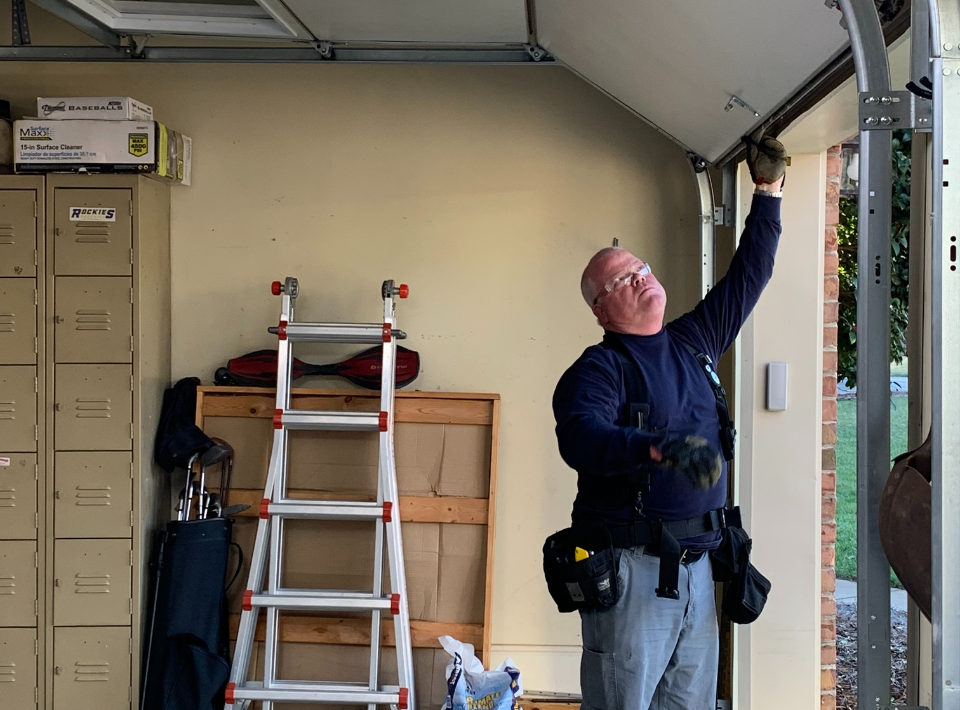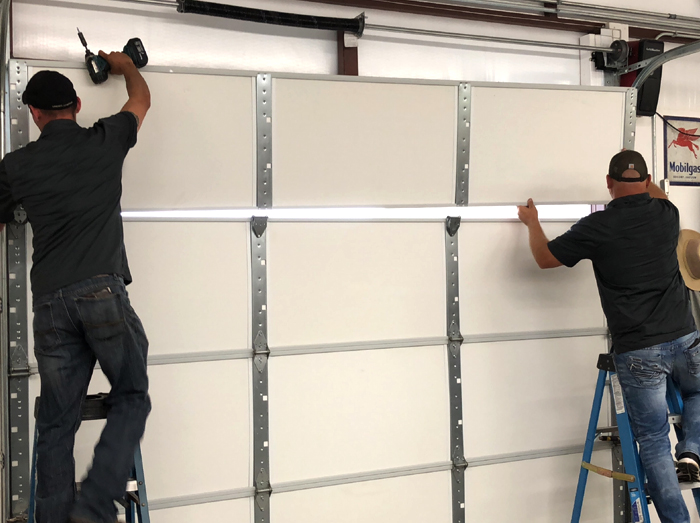Typical Garage Door Problems and How to Deal with Them
Garage doors are vital for both protection and comfort, yet they commonly offer a selection of typical concerns that can discourage property owners. While some concerns might appear straightforward to solve, others may require an extra nuanced understanding of garage door mechanics.
Noisy Garage Door Operation
A noisy garage door operation can be a substantial resource of aggravation for homeowners, often showing underlying mechanical problems. Such disturbances may come from numerous reasons, consisting of damaged rollers, loose hardware, or insufficient lubrication. Identifying the source of the sound is vital for efficient resolution.
Over time, these elements can weaken, leading to grinding or squealing noises as the door moves. Additionally, loosened bolts or screws in the door system can produce rattling audios throughout procedure.
Another contributing factor is inadequate lubrication of the door's relocating parts. Applying a premium lubricating substance to the tracks, springs, and rollers can significantly lessen friction and sound. Home owners need to execute this upkeep periodically to maintain ideal efficiency.
Finally, the garage door opener might likewise generate noise as a result of its age or mechanical problems. If the sound continues regardless of addressing various other elements, getting in touch with a specialist for a complete assessment and prospective repair work might be necessary.
Door Will Not Open or Shut
Experiencing a garage door that will not open up or close can be exceptionally irritating and frequently indicates a malfunction within the system. Numerous factors can add to this concern, and determining the origin is crucial for efficient resolution.

Next, check the safety and security sensors located at the base of the door. These sensing units can come to be misaligned or blocked by debris, preventing the door from running correctly. Clean the sensing units with a soft towel and ensure they are straightened.
Furthermore, the garage door's interior parts ought to be examined. Problems such as a busted spring, damaged rollers, or a damaged opener can hinder movement. If any parts show up to be damaged, it might be a good idea to get in touch with an expert for repair services.
Misaligned Tracks
(No-Fuss Service)Misaligned tracks can drastically interfere with the smooth operation of a garage door, leading to operational failures such as unequal motion or complete immobilization. This concern generally emerges as a result of a variety of variables, consisting of damage, unintended influences, or incorrect installation. When the tracks are misaligned, the rollers can stagnate freely, which not just strains the motor but also presents security dangers.
If you observe any type of discrepancies, it is crucial to resolve the concern without delay. Very carefully tap the track back right into its right position utilizing a rubber mallet or a similar device, guaranteeing it is straight and degree.
As soon as the placement is fixed, retighten the screws to secure the track. For a more permanent solution, take into consideration reinforcing the tracks with extra brackets. Normal maintenance, consisting of cleansing the tracks and making certain rollers are in excellent problem, can stop future imbalances. By attending to misaligned tracks immediately, you can bring back the capability of your garage door and enhance its longevity.
Broken Springs
Amongst the numerous parts of a garage door system, broken springtimes are among one of the most typical issues that can dramatically restrain its performance. Garage door springs are important for balancing the weight of the door, enabling smooth opening and closing. When a springtime breaks, it can bring about a door that is difficult to operate or, in many cases, entirely inoperable.
There are two primary kinds of springtimes: torsion springtimes, which are mounted above the door, and expansion springtimes, located on either side. Signs of a damaged spring consist of a door that will not open up, a visible gap in the springtime, or a loud sound during procedure. Attempting to run a garage door with a damaged spring can cause more damage to the door or the opener.
Fixing damaged springtimes is not a DIY project; it requires specialized devices and knowledge as a result of the high tension entailed. It is suggested to seek advice from a professional service technician who can safely change the springs and guarantee the door is properly balanced. Regular upkeep and examinations can aid stop springtime failures and extend the life-span of the garage door system.
Push-button Control Issues

The very first step is to check the batteries in the remote. Change them if they are weak or dead. If browse around this site the remote still stops working to operate, check the garage door opener to guarantee that its sensing units are tidy and unobstructed. Dirt, debris, or imbalance might hinder the signal transmission between the remote and the opener.
Interference from other electronic tools can additionally impede remote performance. Make certain that nearby devices, such as wireless routers or cordless phones, are not triggering disturbances. garage door service. If disturbance is presumed, attempt moving these gadgets even more away from the garage door opener
In many cases, the remote may need to be reprogrammed. Seek advice from the supplier's guidelines to reset the push-button control and synchronize it with the garage door opener. If all else fails and the remote proceeds to malfunction, consider seeking advice from a specialist service technician for a complete inspection and potential substitute of the remote or opener.
Final Thought
(Superior Quality)In summary, common garage door problems can significantly impact functionality and safety and security. Attending to noisy procedure involves lubrication and tightening equipment, while issues with opening or closing need inspection of power resources and sensing units. Misaligned tracks can be remedied via change, although damaged springtimes demand specialist intervention. Remote malfunctions normally develop from weak batteries or interference, which can be solved with substitute or reprogramming. Proactive maintenance and timely fixings can make sure optimal efficiency and long life of garage doors.